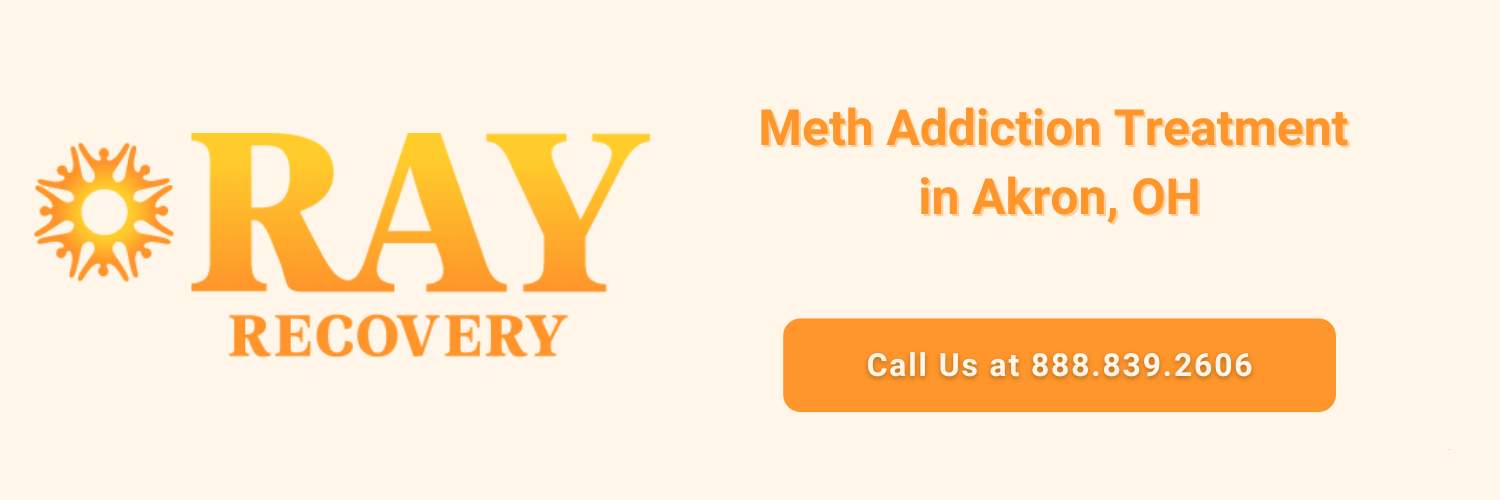A college party.
Hanging out with high school friends in your basement.
A bunch of random kids at the playground.
An after-work trip to the bar for happy hour.
A celebration in the locker room after a big game.
Meeting friends-of-a-friend on an impromptu weekend getaway.
The scenarios are diverse, but the premise remains consistent. Everyone who struggles with a substance use disorder (SUD) started with an initial encounter somewhere.
Depending on the substance, some may use it once and never touch it again. But others may begin the path of addiction after just one hit or sip.
Read further to learn about the use and dangers of addiction to methamphetamine, or “meth,” which has become a popular street drug due to its availability and relatively low cost compared to other substances.

What Is Meth?
Meth is a stimulant first manufactured in Japan in the late 1800s. It is a white, odorless, bitter-tasting powder that easily dissolves in alcohol or water. Military personnel from numerous countries, along with Japanese factory workers, utilized the drug during WWII for its energy and performance-enhancing properties. After the war, the Japanese military discarded large amounts of the drug to the civilian market, which later led to the first epidemic of meth use.
Meth is a highly-addictive drug that is produced in a variety of forms and names. Those who use meth may experience:
- Enhanced feelings of overall well-being
- Extra energy
- Elevated feelings of libido
- Decreased appetite
The effects of the drug tend to last longer than other illicit substances and generally cost less. Combined with the euphoric effects and being produced from readily available ingredients, this makes it a widely utilized drug of choice.
How Is Meth Addictive?
Meth is a synthetic drug that impacts the central nervous system. While it enhances energy levels, focus, and alertness, it also has addictive and severe side effects. Meth can be smoked, injected, taken by mouth, or snorted.
With any route of intake, when meth enters the body, it rapidly crosses the blood-brain barrier and alters the release and reuptake of neurotransmitters such as serotonin, norepinephrine, and dopamine. Dopamine, in particular, is described as the “feel-good” neurotransmitter and is responsible for the feelings of euphoria and pleasure when meth is used.
How Addictive Is Meth?
There is not a simple formula or solid timeframe of how long it takes for an individual to become addicted to meth. Some people will crave the drug after it wears off after the first time, and others may use it a few times before cravings occur or a habit forms.
A good indication of how addictive meth or another substance may be is called the half-life, which is the time it takes for half the dosage to be metabolized and then eliminated from the bloodstream.
The half-life of meth will vary depending on a few factors, and the effects of meth can last anywhere between 8-24 hours, depending on:
- The amount taken
- Time of the day, such as when you are awake and active versus sleeping and relaxed
- How it was administered
- Intravenous
- Oral
- Snorted
- Smoked
- How well your kidneys and liver are functioning
- Your individual body chemistry and metabolism
Why Meth Is Addictive
Simply answered, our brains play a significant role related to addiction or meth — or any substance.
Your brain reacts differently to each drug, and each drug affects various areas of your brain.
Addiction will be expedited if meth or another substance is injected directly into a vein, snorted, used with increasing amounts, or taken with increased frequency.
The more you use and the higher the dosage, the greater your tolerance becomes over time. This causes the pleasurable effects that happen with meth use to weaken and the cravings for more to heighten. Oftentimes, this pattern results in addiction that requires professional help in healing.
How Meth Works in the Brain
Many people become addicted to meth because of the way it increases the ability to function short-term. Before long-term damage is apparent, many people become addicted.
The pleasurable and desired effects of meth occur when the body releases very high levels of dopamine, which is the chemical directly related to motivation, pleasure, and motor function.
However, the more a person uses meth, the less common euphoric effects become. They may use higher and higher doses to relive the first experience. Tolerance is building during this time, as the brain and body are functioning with higher and higher levels of dopamine and methamphetamine.
The body then attempts to regulate the number of hormones and neurotransmitters produced to function. This helps people maintain a state of balance across all the body systems in order to survive and function properly, a concept known as homeostasis.
Since meth increases levels of dopamine, over time the dopamine receptors become desensitized from repeated bombardment of meth use. If dopamine levels become too low, the body then experiences feelings of intense withdrawal.
The Effects of Meth on the Body
Individuals who use meth consistently can expect to suffer long-term physical and neurological damage to their bodies.
Negative effects on the body may include:
- Significant weight loss
- Tooth decay, mouth sores, and the potential for oral infections
- Organ damage
- Liver
- Heart, including an increased heart rate
- Brain
- Lungs, including an increased respiratory rate
- Heart attack
- Increased body temperature
- Itchy skin, which often results in wounds from intense scratching
- Mental health decline
- Depression
- Psychosis
- Paranoia
- Hallucinations
- Unpredictable behaviors
- Development of compulsive tendencies
- Apathy related to the consequences of behaviors
The initial feelings of euphoria and well-being once experienced by the drug can quickly turn to negative physical and emotional declines, with long-lasting effects on life.

The Length of Meth’s Duration
Effects of meth ingestion, or the rush, can be experienced quickly — almost immediately or within a few minutes — depending on the mode of ingestion.
However, the desired high or rush rapidly wears off, resulting in a crash. Since meth is short-acting, some individuals will take repeated doses or hits to extend the high.
Tolerance Build Up
Continued meth use will eventually deplete dopamine levels in the brain, which leads the individual to become more and more reliant on the drug to experience the feelings of pleasure. Increased doses or more frequent use is required at this time to achieve the euphoria they experienced upon first using the drug, leading to drug-seeking behaviors and the progression of the addiction.
It Only Takes One Hit
Similar to many other recreational drugs, it may only take one time of use, or “hit,” to want to use again because of the effects experienced.
Not everyone who uses meth becomes addicted after a single use — but it is easy for an individual to become addicted in a short amount of time since meth can rapidly and drastically enhance a person’s mood, creating the desire to seek another hit.
In contrast to some other drugs, meth also provides a longer-lasting high along with a greater percentage of the drug remaining in the body. This results in meth being present in the brain longer and can ultimately lead to higher rates of addiction.
Meth Is Easy To Make or Obtain
One of the reasons meth is so widely used is because it can be easily obtained and produced from common ingredients, although many of the ingredients should never be ingested.
Common ingredients of meth include:
- Antifreeze
- Ephedrine or pseudoephedrine
- Red phosphorus
- Hydrochloric acid
- Anhydrous ammonia
- Drain cleaner
- Battery acid
- Lye
- Lantern fuel
How Addictive Is Meth Compared to Other Drugs?
Methamphetamine is different from and more dangerous than other stimulants because a larger percentage of the drug remains unchanged in the body. This allows the drug to be present in the brain longer, extending the stimulant effects.
In 2018, 1.8 million people in the United States ages 12 and older reported they had used meth within the past year.
Comprehensive statistics comparing meth addiction percentages to other substances are difficult to obtain related to the lack of accurate data and reporting. However, methamphetamine remains ranked in the top ten of addictive substances.

Find Available Treatments for Meth Substance Use Disorder at Ray Recovery
Are you or someone you love struggling with a substance use disorder?
Addiction can be challenging for the individual and their loved ones. Ray Recovery in Akron, Ohio, is here to help, offering addiction treatment programs designed to help people struggling with drug addiction and substance abuse begin to live healthier and happier lives.
Treatment programs and recovery from meth use are customized to your needs, and may include the following:
- Acceptance and Commitment Therapy (ACT)
- Cognitive-behavioral therapy
- Dialectical behavior therapy
- Intensive outpatient treatment
- Partial hospitalization program
- Men’s and women’s rehab
- Dual diagnosis treatment, which addresses substance use disorder combined with mental health needs
Our individualized approach is evidence-based and recovery-oriented, focusing on providing comprehensive care for the person as a whole rather than just the addiction itself. We understand that recovery from addiction is an ongoing process and a journey of self-discovery.
Contact us today to begin your journey to overcome the grip of a substance use disorder.
The content in this blog is not intended to be a substitute for professional medical advice, diagnosis, or treatment. Always seek the advice of your physician or other qualified health provider with any questions you may have regarding a medical condition



